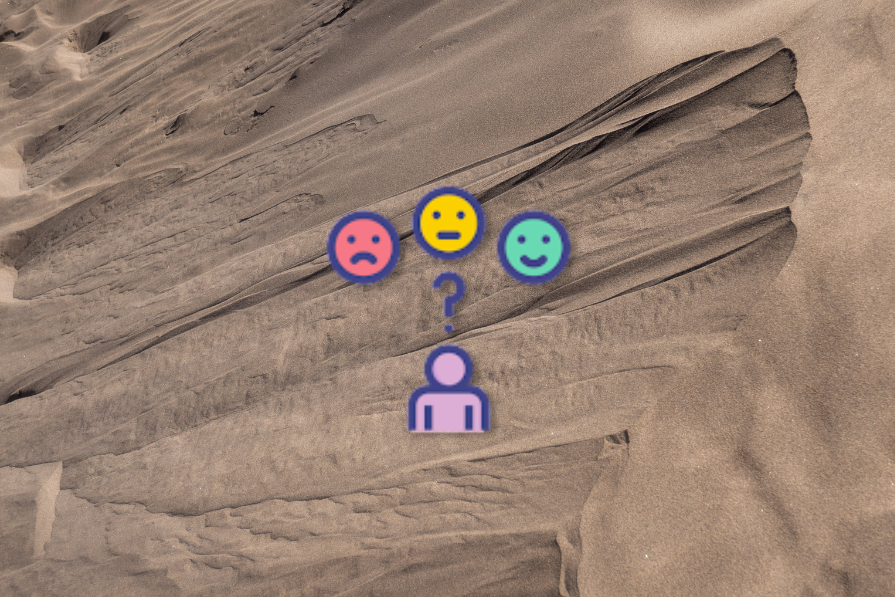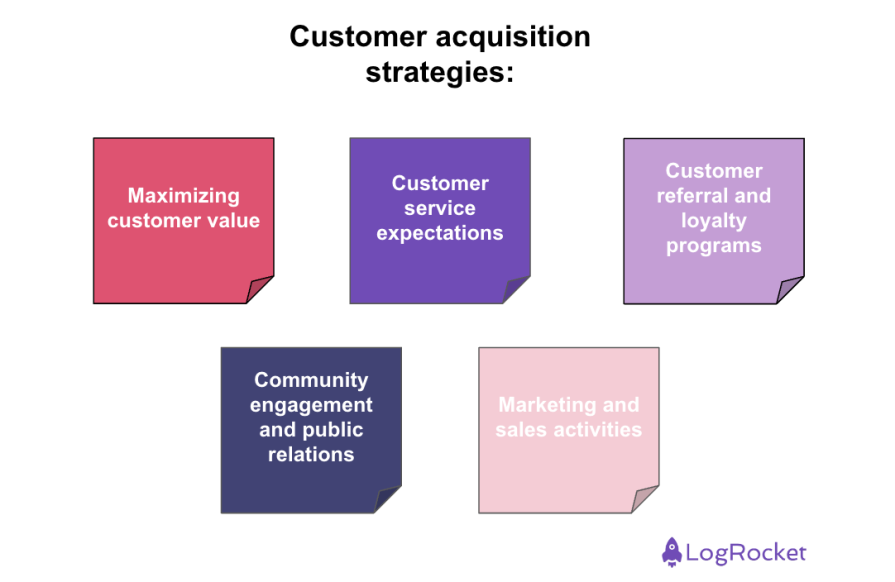Customer acquisition is the lifeline of any business. Without customers, there’s no revenue, and without revenue, eventually there will be no business. The rise of fierce competition due to the proliferation of digital channels, easily available information, and fragmented customer attention, has made it difficult for companies to attract and retain customers long-term.

To continuously engage customers and provide value (for which customers are willing to pay), you have to adapt and evolve your acquisition strategies based on data-driven insights and prioritize customer-centricity in your product development and marketing efforts.
But how do you bring on new customers? How does this translate into revenue? And are there business opportunities beyond the immediate transaction of the initial sale? You’re about to learn all of this and more!
Customer acquisition is the process through which businesses identify, attract, engage, convince, and convert prospective customers into active consumers that pay for and use the company’s products/services. It includes pursuing product development to provide maximum customer value, as well as strategic marketing and sales activities that build brand awareness, generate interest in products and services, and finally convince a potential customer to make a purchase or take a desired action.
Customer acquisition is a multi-faceted process that typically includes various activities, such as market research to understand your target customer base, figuring out what kind of customer value can be delivered and at what price point, the development of effective marketing campaigns, choosing the appropriate communication channels, and the implementation of sales activities to successfully close business deals.
However, acquiring and retaining customers comes at a cost, namely your customer acquisition cost (CAC).
Customer acquisition cost refers to the total amount of money a business spends to acquire a new customer. It includes all the costs your business incurs due to product development, marketing, sales, and other activities aimed at attracting and converting potential customers into paying ones. CAC is an important metric to help a business assess the efficiency and effectiveness of the strategies employed to acquire customers. Tracking CAC over time allows you to identify trends and optimize acquisition channels. This enables you to allocate resources more effectively, thereby driving down acquisition costs and maximizing customer acquisition.
Another important metric is customer lifetime value (CLV), which represents the total revenue a business expects to earn from a single customer over time. By comparing CAC to CLV, you can determine whether the acquisition efforts undertaken are generating positive returns on investment. Ideally, CAC should always be lower than CLV to ensure profitability and sustainable long-term growth.
To calculate CAC, divide the total costs incurred in acquiring customers (product development, marketing, sales costs, etc.) within a specific period by the number of customers acquired during that same period.
CAC = Total cost of acquisition efforts / number of customers acquired
This formula gives you the average cost of acquiring a single customer. CAC might change over time depending on various factors, both internal and external, that impact customer value and the ability to deliver it effectively.
Customer acquisition strategies vary in effectiveness, depending on factors such as the industry and market conditions that you’re in, target audience, competitors, budget, and even execution of the acquisition strategies. The best results are often achieved when you take a comprehensive and integrated approach that combines multiple acquisition strategies, customized to what your business needs at the time:

You can create innovative products and services that address customer problems effectively or provide unique solutions that can attract new customers organically. You can also improve customer satisfaction by optimizing user experience and iterating on products based on customer feedback. This helps customers to not only use your product but also fall in love with it. Organic customer acquisitions don’t cost a lot, but provide maximum CLV to the business.
Providing exceptional customer service can be a powerful acquisition strategy. Customers like to be treated well and when your business prioritizes responsiveness, timely and effective problem solving, leading to customer satisfaction, it creates significantly positive experiences for the customer. This ensures that customers keep coming back, even when they face problems, because they trust that their issues will be addressed efficiently.
Word-of-mouth referrals that come from satisfied customers lead to new customers, organically. Creating referral programs can incentivize existing customers to influence their friends, family, colleagues to buy from your business through trusted recommendations. Long-term loyalty programs, like rewards and discounts, can also create gamified user experiences for customers, encouraging them to indulge in repetitive business transactions.
Engaging with local communities, charities, and social causes can create goodwill and positive associations for the business. This helps attract new customers who align with your brand values and mission. Pairing this with positive publicity and media coverage helps enhance your business’s visibility and credibility. This can also include affiliates and influencers who are motivated to attract customers to your business.
Creating effective marketing strategies like content marketing, social media marketing, email marketing, etc. can help get the word out about your business. Creating content around positive customer experiences in the form of testimonials, customer reviews, case studies can help boost sales conversations. Sales activities such as client-based promotions and discounts can help attract customers and close sales deals quickly. Nurturing relationships with customers and potential customers over time can have a deep impact on customer loyalty and shorten the sales cycle.
Various marketing techniques are used to acquire customers. These techniques leverage different channels and strategies to reach and engage target audiences effectively. While you can customize marketing strategies to suit the needs of your business, continuous monitoring, testing, and optimization are essential to maximize the effectiveness of these techniques and drive sustainable customer growth over time.
Some of the most popular marketing techniques, among many others, are:
Customer acquisition and user acquisition are similar and related concepts, but they are used in different contexts and have distinct objectives. Both play a major role in business and revenue growth, and typically drive corporate strategy and product roadmaps. If the product is at an early stage in the product life cycle, product teams focus on customer acquisition, whereas if the product is at a later stage, you’d want to focus on user acquisition instead.
Here are some differences between customer acquisition and user acquisition:
| Acquisition type | Definition | Focus | Goal | Example |
| Customer | It’s the process of identifying, attracting, and converting potential customers into paying ones | On acquiring individuals or organizations that are willing to make a financial transaction with your business | To drive revenue, profitability, and business growth | Converting website visitors into purchasers |
| User | It’s the process of acquiring users for a product, platform, or a service, whether or not they pay for it | On acquiring individuals that will engage and use the product, platform, or service, but not necessarily pay for it | To increase the user base, drive usage, and potentially monetize through advertising and freemium models | Acquiring users to download and use a free mobile app that provides in-app advertisements |
To drive profitability and business growth long-term, you need to create a sustainable customer acquisition model that focuses not just on acquisition, but also customer retention. This requires a comprehensive and strategic approach that takes into consideration various factors, including your target audience, current marketing conditions, industry trends, product-market fit, value proposition, marketing channels, measurable metrics, optimization strategies, etc.
Here are a few steps to build a sustainable customer acquisition model for your business:
Ensure that your customer acquisition costs are within acceptable limits and that your strategies are driving long-term value and growth for your business.
Customer acquisition strategies and campaigns don’t have a one-size-fits-all playbook. They have to be customized to what the business needs, considering all the variable factors we discussed above. Businesses that have had successful customer acquisition campaigns have often leveraged a mix of product development and marketing/sales techniques.
During the recent COVID-19 pandemic, Zoom experienced exponential growth and became THE platform to use for virtual video communication and remote work. The company responded proactively to the surge in demand by providing free accounts to individuals and schools, offering enhanced features for businesses, and bolstering security and privacy measures.
It also partnered with social causes, like the “Together Campaign” in the UK to tackle loneliness and bring communities together, which significantly enhanced its marketing efforts, ultimately driving up the business’s revenue.
One of the most popular mental health mobile apps, Calm, focuses on mindfulness, meditation, and restful sleep. Its Sleep Stories series is a brilliant example of a marketing initiative that leverages valuable content marketing and influencer partnerships to acquire customers effectively.
Its stories are narrated by celebrities like Matthew McConaughey and Harry Styles, which helps attract widespread attention by an audience interested in relaxation and sleep improvement.
Warby Parker is an eyewear company that disrupted the industry with its direct-to-consumer model, offering a diverse variety of stylish, affordable glasses. The company’s home try-on initiative allows a customer to try multiple frames at home before making a purchase.
It also leverages virtual reality to help customers try on the glasses virtually as well. This successfully enabled the company to remove barriers to entry and drive customer acquisition through a seamless and user-friendly shopping experience.
Mastering the art of customer acquisition is important for businesses striving to thrive in today’s dynamic and highly competitive marketplace. By understanding the needs and preferences of your target audience, leveraging data-driven insights, and focusing on customer-centric product development, you can customize your customer acquisition strategies to make them work for your business.
Remember, the ultimate goal of customer acquisition here is to create long-term sustainable relationships with paying customers. Your initiatives should be focused on attracting, converting, and retaining loyal customers over time. This requires a combination of creativity, persistence, and adaptability. By embracing these fundamental principles and continually refining the customer acquisition strategies, you can position your business for sustained customer growth and success.
Featured image source: IconScout

LogRocket identifies friction points in the user experience so you can make informed decisions about product and design changes that must happen to hit your goals.
With LogRocket, you can understand the scope of the issues affecting your product and prioritize the changes that need to be made. LogRocket simplifies workflows by allowing Engineering, Product, UX, and Design teams to work from the same data as you, eliminating any confusion about what needs to be done.
Get your teams on the same page — try LogRocket today.

A practical framework for PMs to use AI in ideation without sacrificing judgment, strategy, or decision quality.

A practical five minute revenue estimation method to help product managers compare ideas, drop low impact features, and prioritize smarter.

A practical guide for PMs who want to stop being bottlenecks, delegate smarter, and lead teams effectively with a clear ownership framework.

Stop letting unreliable data block features. Treat data as inventory to track quality, ownership, and ship with confidence.